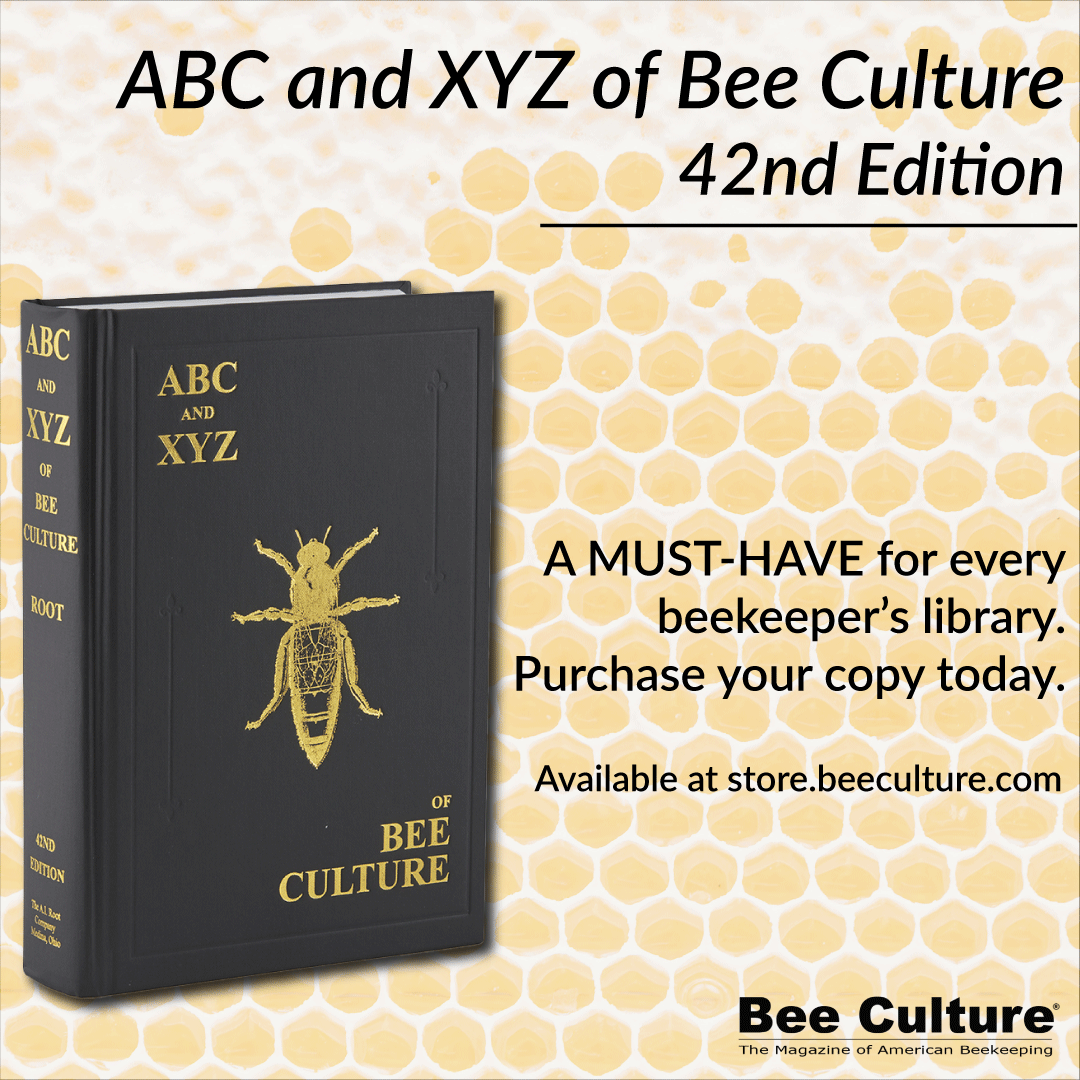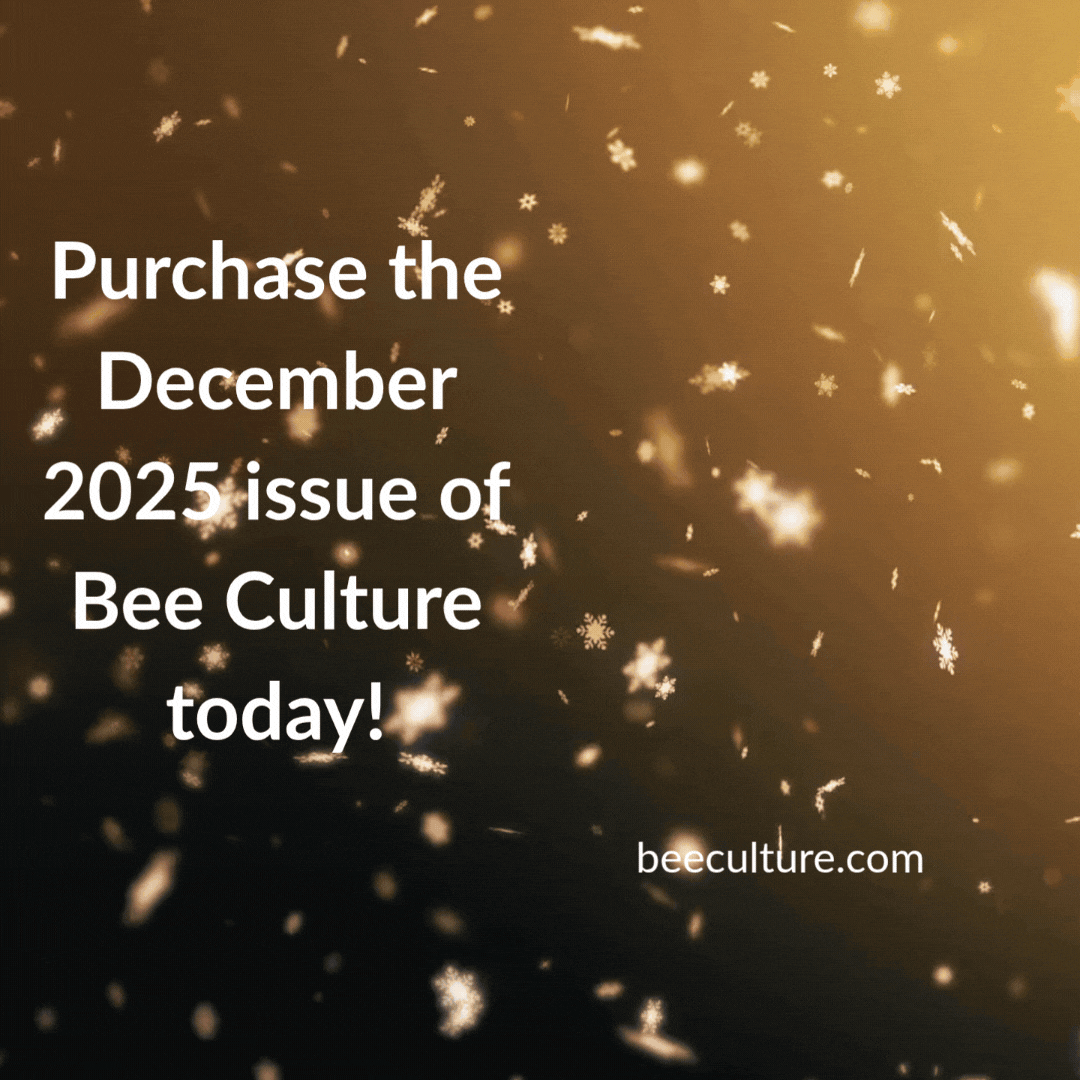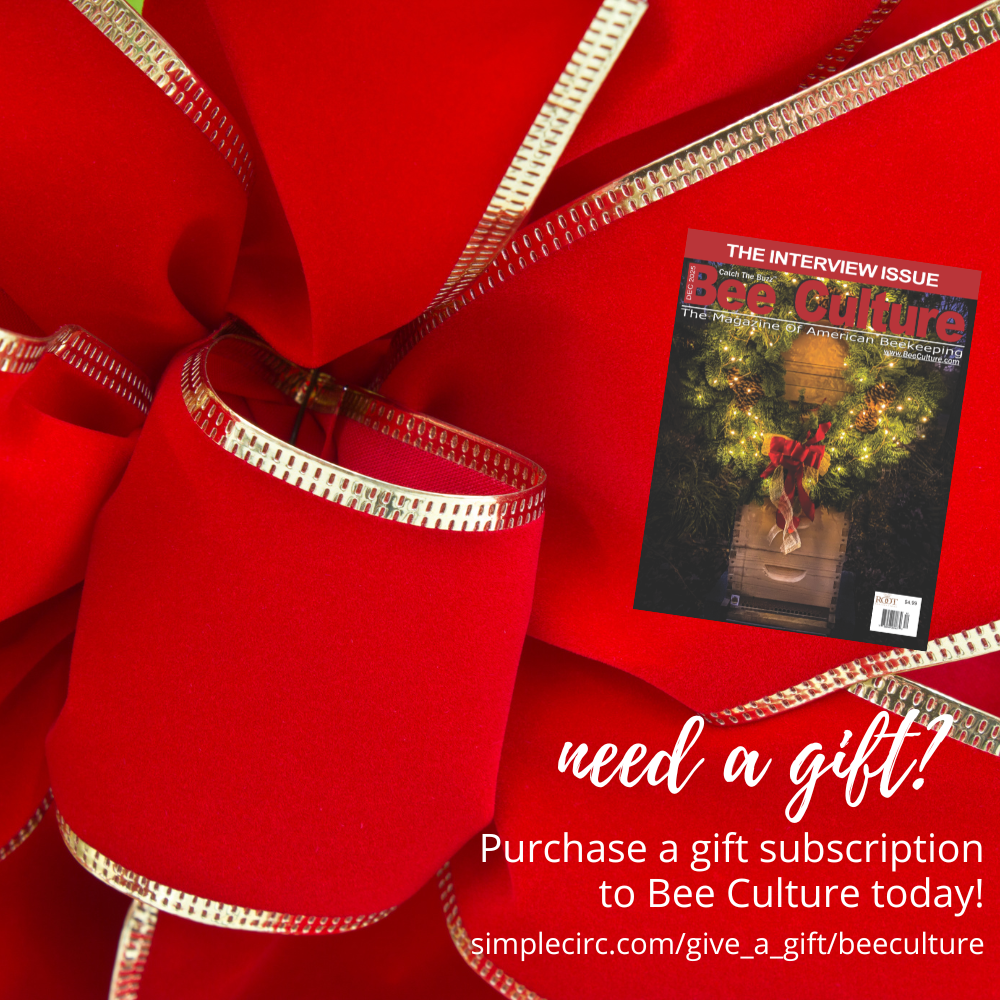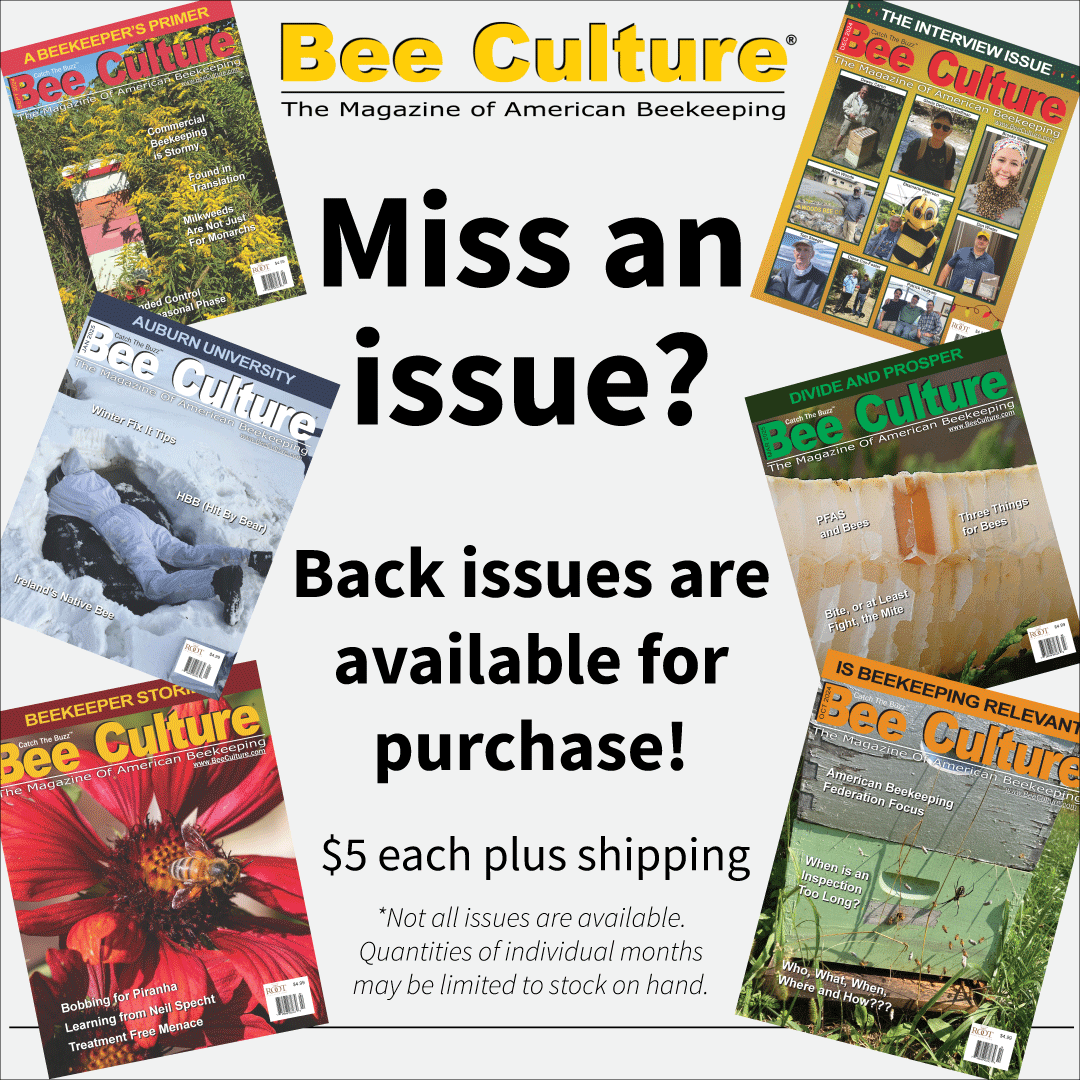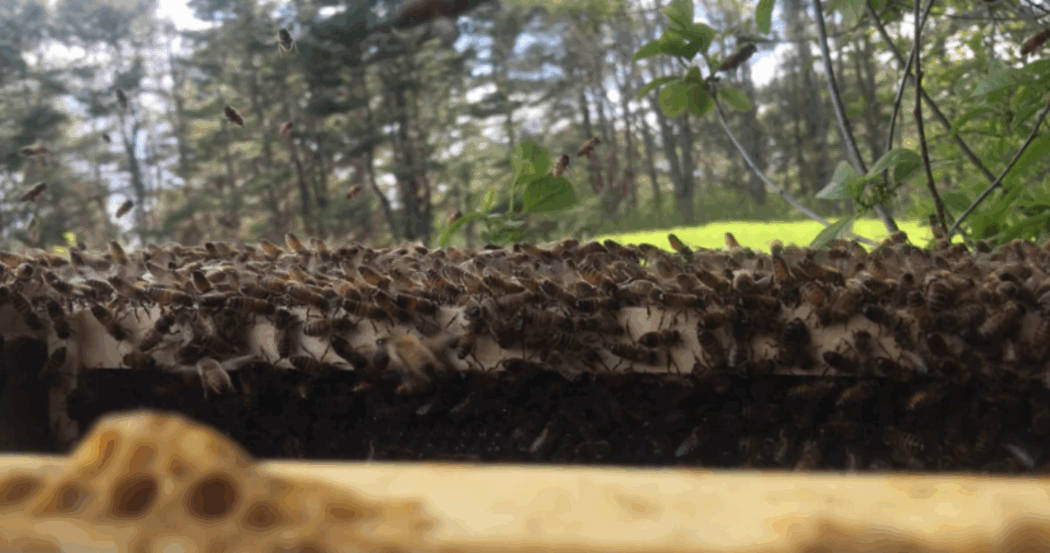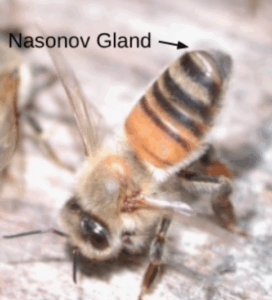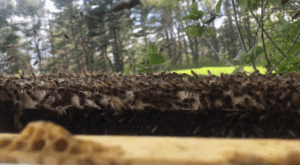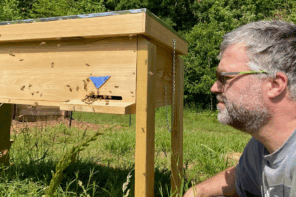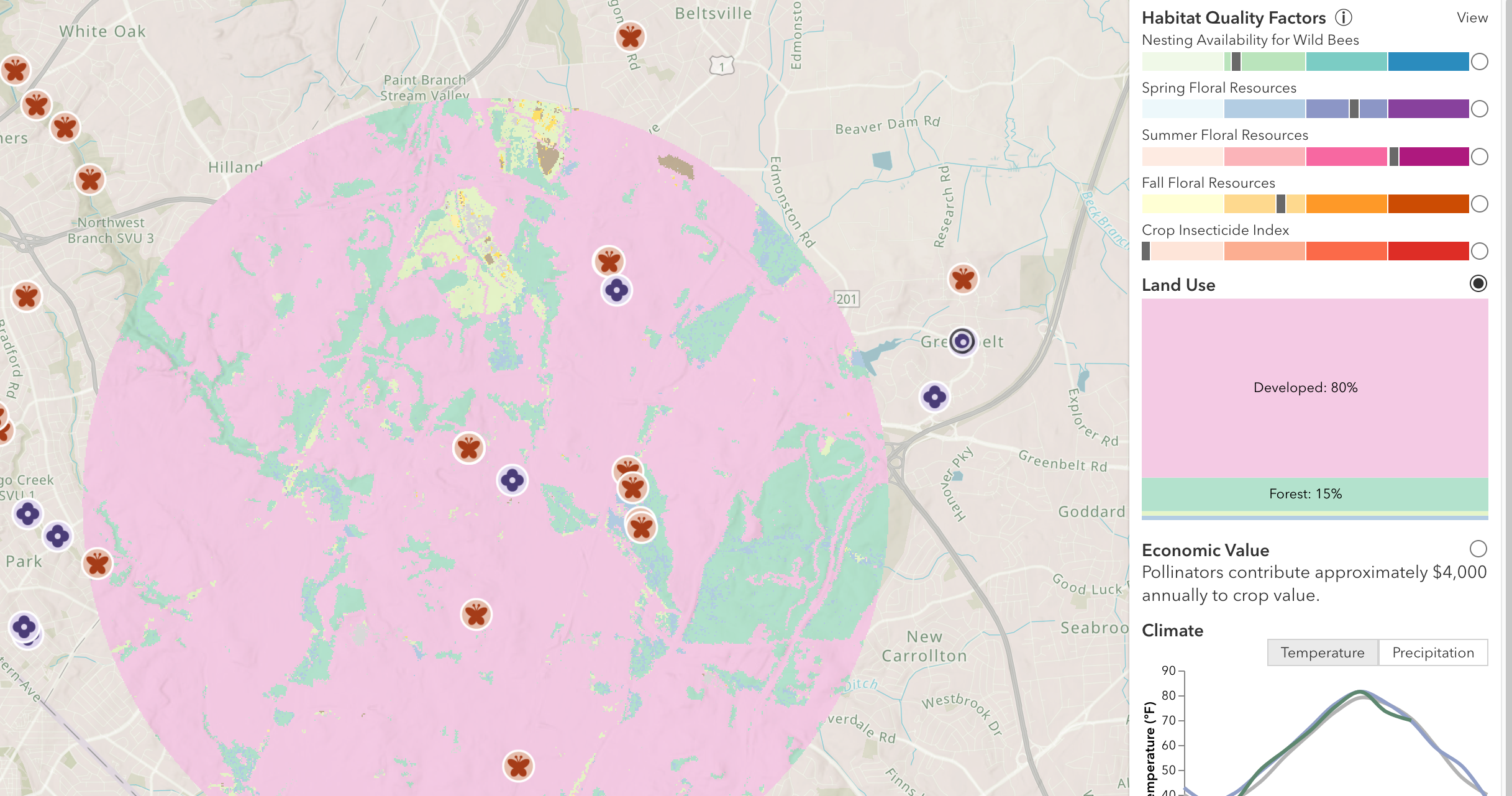By: Kevin Cheatham-McFadden
This article was originally published in The Bee Line
Introduction
Much of the information we gather about the world comes through our senses — taste, smell, touch, hearing, and sight. Of these, smell is especially powerful in stirring emotion, often unlocking vivid memories tied to specific scents. You can probably think of a smell that instantly transports you to a meaningful moment. As remarkable as this is, our sense of smell is relatively weak compared to that of some other animals. For example, while humans emit distinct odors influenced by diet and skin microbes, we struggle to detect subtle scent differences between individuals. Honey bees, on the other hand, have an exceptional sense of smell. With a single “sniff” from her antennae, a guard bee at the hive entrance can instantly determine whether an incoming forager is a nestmate or an outsider. Honey bees also take smell to the next level with their use of external hormones called pheromones.
Hormones are chemicals that communicate information. For instance, when your blood sugar drops, cells in your pancreas secrete insulin — a hormone that tells your liver to release sugar into your bloodstream, bringing your blood sugar up. Instead of communicating information within yourself, pheromones are hormones that are released into the environment to convey information to others. Whether humans produce pheromones is a matter of debate in the scientific community, but it’s clear that we don’t instinctively detect or respond to them. In the dark, crowded environment of a beehive, however, pheromones play a crucial role in communication.
Our understanding of honey bee pheromones is incomplete–particularly regarding the chemical cocktails that different pheromones are composed of, the different role each chemical plays, and what these chemicals do when combined. However, we do have a better understanding of what information many honey bee pheromones communicate. Some of the more fascinating honey bee pheromones include alarm pheromone, Nasonov pheromone, and even a death pheromone.
Alarm Pheromone
If you’re a beekeeper, you’re probably already familiar with alarm pheromone. When a worker bee feels threatened, she releases this chemical signal to alert other workers and prompt them to defend the hive. A common misconception is that she must sting you to release it — but she doesn’t. I’m reminded of this every time I open a hive under less-than-ideal conditions and get hit in the face with the sharp smell of banana as bees crowd around my veil, trying to reach my face. That banana-like odor comes from isoamyl acetate, a key component of alarm pheromone, which also happens to be found in bananas.
There’s plenty of anecdotal evidence warning against eating bananas before inspecting a hive. For example, check out David Burns’ YouTube video, “Will Bees Go Crazy If You Eat a Banana Before Inspecting Your Hive?”, where his friend Jon waves a banana in a sock over a hive — for your entertainment. While amusing, there’s no scientific evidence, to my knowledge, confirming that eating a banana before working bees triggers aggression.
One of the primary reasons beekeepers use smoke is to mask alarm pheromone. Smoke interferes with the bees’ ability to detect these signals, helping to prevent an aggressive response. It’s also good practice to smoke the area where you’ve been stung after removing the stinger — otherwise, the lingering alarm pheromone can attract more stings to the same spot.
Nasonov Pheromone
In 1882, a Russian zoologist named Nikolai Nasonov first described the Nasonov gland, located on the upper side of a worker’s abdomen toward their stinger. Interestingly, the secretions from the gland were first hypothesized to either secrete sweat to cool the bee down when they were hot, or as water being pulled out of nectar as part of the curing process. It wasn’t for another 20 years that it was suggested the gland secreted a pheromone.
Nasonov pheromone is a locator signal that tells other honey bees to “come here.” It operates in several scenarios:
- At the hive entrance. Ventilator bees release the pheromone into the air at the hive entrance. Returning foragers use visual landmarks and Nasonov pheromone in the air to hone in on their home.
- On blooming flowers. Foragers also release Nasonov pheromone on flowers rich in nectar. This marks reliable food sources, so other foragers can navigate directly to these flowers instead of searching at random.
- Post-swarming. After relocating, a new colony uses Nasonov pheromone to guide any bees that haven’t yet found their new home. For example, when you shake a swarm into a box, chances are you did not capture 100% of the bees. If the queen is inside, you’ll often observe numerous workers dispersing Nasonov pheromone across the frames and around the entrance en masse, helping stragglers locate their new home. See the picture below for reference.
Nasonov pheromone is composed of several chemicals also found in plants such as roses, lemongrass, and ginger. If you’ve ever noticed a lemongrass or citronella scent near your hives, this is likely the reason. This similarity is why lemongrass oil is commonly used to attract swarms to swarm traps—it mimics Nasonov pheromone, signaling to bees that a suitable location has been found.
A fun experiment involves opening a bottle of lemongrass oil and placing a drop on your glove. Bees will be attracted to you almost immediately. Just remember to wash the glove afterward!
A common misconception is that each colony possesses a unique blend of Nasonov pheromone, enabling foragers to identify their specific hive in a bee yard with multiple colonies. While it’s true that hives have distinct scents, this individuality is not attributed to Nasonov pheromone. Instead, a colony’s unique scent profile arises from chemicals present on the bees’ exoskeletons. These chemicals function as a “colony fingerprint,” facilitating nestmate recognition through direct contact rather than airborne transmission.
Death Pheromone
Death pheromone is prevalent in social insects such as ants and honey bees, serving as a crucial signal for colony hygiene. A primary component of this pheromone is oleic acid. In the 1950s, biologist E.O. Wilson discovered that applying oleic acid to a living ant caused its nestmates to perceive it as dead, prompting them to transport it to the colony’s waste pile.
Interestingly, oleic acid is also present in many processed foods, including cereals like Trix. Some ant enthusiasts claim that placing a piece of Trix cereal near an ant colony leads ants to treat the area as a graveyard, depositing their dead there.
Another key chemical in death pheromone is βocimene. βocimene is released by living honey bee larvae to signal nurse bees for feeding. βocimene is also released with oleic acid by dead brood upon their decomposition. βocimene first draws attention to the dead brood, while oleic acid confirms death and triggers removal. While oleic acid serves as the “death cue,” βocimene acts as an “attention flag.”
For dead adult bees, the process is more complex. It is suggested that oleic acid and βocimene still play roles, but additional tactile cues (e.g. stiffness) and changes in chemicals on their exoskeletons also signal death.
Quick removal of dead individuals is essential in high-density environments like a beehive to prevent disease transmission. Comparable to humans isolating contagious individuals, honey bees rely on swift detection and removal of their dead — guided by these chemical signals — to protect colony health.
Conclusion
My conclusion is a tangent. I’ve noted several chemicals found in pheromones that are also produced by other species. In many of these cases, the ability to synthesize these chemicals evolved independently and often serve entirely different purposes. For example, the banana smell of isoamyl acetate is attractive to animals that aid in the banana plant’s seed dispersal when they defecate. The fact that the same scent can evoke a “Yum!” response in some species yet provokes an aggressive “Attack!” response in honey bees is truly mind-blowing. The domains of life are full of such fascinating examples. So the next time you smell something satisfying, pause and consider: what reaction might that scent trigger in another species — and why?


